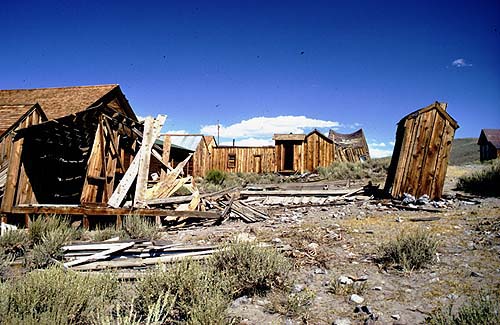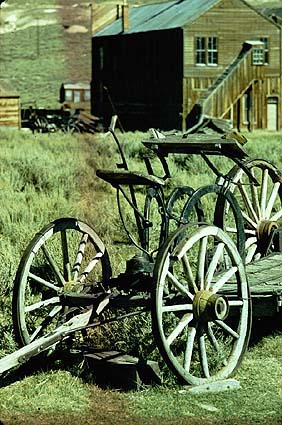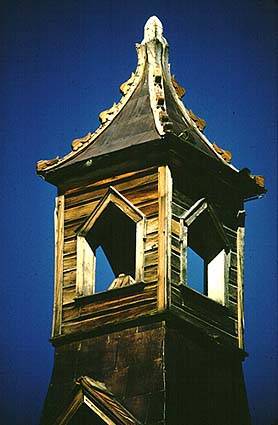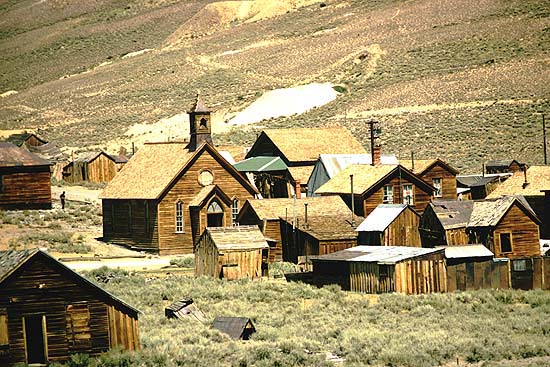

Consider this an interim introduction to a grand old lady of The West...Bodie, California. When I get the time, I'll flesh out the story with all the old gal's lurid details. In the mean time, however, scan through the photos, which I shot during several recent and not so recent visits to the wonderfully nasty old lady. If enough of you bug me, maybe I'll get around to telling her full story sooner rather than later.
In 1880, Bodie was exactly what the movies always paint a boomtown to be, right down to the red light district ("Maiden Lane") with it's legendary heart-of-gold prostitute, Rosa May (saved the lives of some miners), more saloons than houses and an unbelievable amount of money and violence. The most famous saying of the day is attributed to a young girl whose family was moving to the boomtown, "Goodbye, God, I'm going to Bodie."
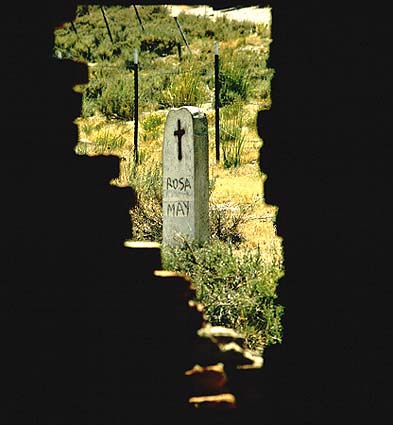 At it's peak, in 1880, 10,000 souls,
both good and bad, lived in the desolate, high desert valley south
of Carson City, Nevada just over the California border. Five years
and $21 million dollars in gold later, less than 700 still fought
the hard fight, which the depleted mines and carnivorous weather
demanded.
At it's peak, in 1880, 10,000 souls,
both good and bad, lived in the desolate, high desert valley south
of Carson City, Nevada just over the California border. Five years
and $21 million dollars in gold later, less than 700 still fought
the hard fight, which the depleted mines and carnivorous weather
demanded.
Today, Bodie is the queen of the ghost towns. In 1932 a savage fire, started by a young boy, Bodie Bill, erased nearly 70% of the town, but what is left is magnificent. Situated 20 miles off the highway at 8,600 feet above sea level, the isolation and severe weather protected the old town's remains until she was declared a National Monument and given the protection that status entails.
The single nicest thing about Bodie today is that she is almost exactly as she was in 1932, when the ashes were still smoking and virtually everyone in town said, "To hell with this." They tossed what they could in their cars and trucks and rumbled over the ridge, never looking back. The houses and buildings still have ramshackled piles of personal belongings and supplies heaped on the floors where they've fallen from decaying and broken shelves. Toys sit in dusty corners. Old clothes and tools are where they were dropped in the last moments of the headlong rush back to civilization.

The National Park Service has put barricades on all the roads actually leading into town and established a parking lot within easy walking distance. They have people in full-time residence in the town, but you'd never know they were there as their entire goal is to stop the town's downhill slide but to make no effort to restore it. There are no boutiques. No food stands. No one hawking maps on the corners. There is only the ever-present wind and dust that carries with it the silence which entombs one of the most boisterous towns the American west has ever produced, which is saying a lot.
So, enjoy. I'll tell you the whole story, eventually. I promise
For those who care, these were almost all shot with old Nikon
F''s on Kodachrome 25 film
